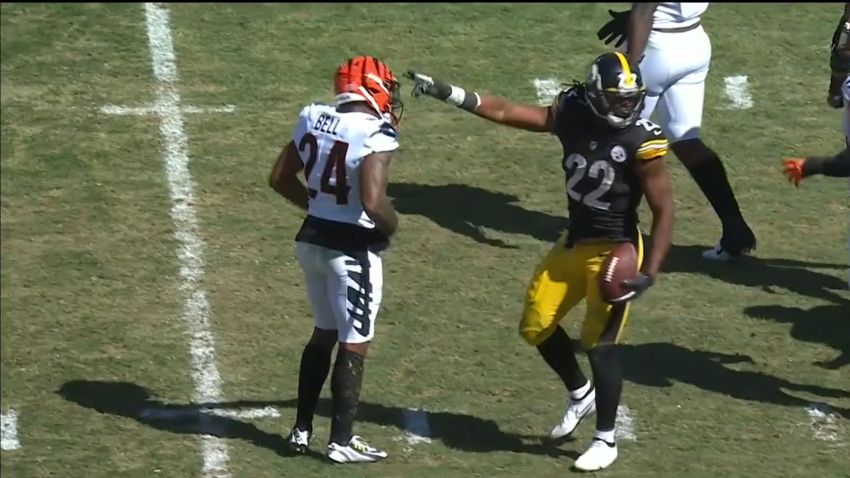Pittsburgh Steelers rookie running back set a franchise record for the position on Sunday when he caught 14 passes on the day on 19 targets—although he dropped three or four of the ones that were not complete. The volume itself is remarkable, but as we’ve heard since the game, was a byproduct of the game circumstances.
Harris was targeted more times, for example, than the Cincinnati Bengals even threw the football all day. Quarterback Joe Burrow only had 18 pass attempts. And the running back said after the game that basically none of his catches were designed plays, but rather checkdowns, which head coach Mike Tomlin elaborated on earlier today.
“That was a function of the day”, he said when asked about the volume of checkdowns to Harris. “It won’t necessarily represent the functions of us moving forward, but it did transpire in that game, and he was a good resource to us, and it was productive. You don’t like to utilize it as much as we did, but it’s obvious things: we were playing with backups in certain instances. We went into the game without Diontae. JuJu went down in-game. We had Cody White playing, who was playing in his first NFL action, etc.”.
In spite of the drops, some of which were less concerning than others, Harris has proven to have the skills of a complete back early in his career. He has already caught 20 passes for 149 yards with a touchdown in the first three games of his career, and would be on pace to catch over 100 passes this year if his current rate were to be maintained. But that’s not necessarily what the Steelers want to do, at least in this way.
“The quality of execution and cohesion in that area of the field just probably didn’t lend itself to going down the field as much as we would like”, Tomlin said of why they worked the short areas of the field so much, in which Harris played a key role, “so some of those passes ended up in the hands of Najee, which is not a bad place for some of those passes to end up”.
The Steelers’ offensive line still has a lot of work to do to be presentable as a run-blocking unit, but Harris’ ability to make an impact as a receiving threat has allowed him to stay very involved in the offense in the early stages of his career.
Not that he’s had much choice, because he has been on the field for nearly every play to date, logging 96 percent of the Steelers’ offensive snaps—190 in total—so far this year, averaging 20 touches per game with a 2-to-1 run-to-reception ratio.








